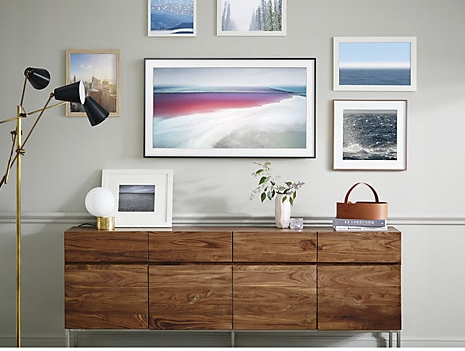Curved TVs –whats the point ?
All the big TV manufacturers are producing concave TV screen versions of their UHD models… are these the future or just short-lived gimmick from manufacturers attempt to show how clever they can be !
The arguments in favour of Curved TVs…
1. They improve immersion
This is the biggest argument made in favour of curving TV screens. The idea is that by curving the image slightly forward, the world you’re watching seems to ‘wrap around’ you more, entering slightly more into your peripheral vision and thus drawing you deeper into the world you’re watching.
2. The sense of ‘depth’ is enhanced
One of the most common reactions from people watching a curved screen for the first time is that it looks like 3D, even when the source is only 2D. This is because curving the edges of the image towards the viewer enhances the visual perception of depth in what you’re watching. There is also features to adjust the contrast of different parts of the image to boost the sense of field depth.
3. You get a wider field of view
Bending the edges of the image towards you gives a perceived wider image than you get with a flat screen.
4. Contrast is better than ‘non-curved’ screens
This is more theoretical than factual – The argument suggests that curved screens focus the light coming from the screen more directly at your eyes – in much the same way satellite dishes strengthen signals by focussing them onto an LNB – and so can deliver between 1.5x and 1.8x higher contrast than flat screens.
5. Uniform viewing distance
Manufacturers suggest that curved TVs track the rounded shape of our eyes better, and thus deliver a more focussed, comfortable image than flat screens. This argument is born out to some extent by the use of curved screens in commercial cinemas, where the curve helps the projected image retain even sharpness right into the corners of their vast screen sizes.
6. You get a wider effective viewing angle
You would think that curving the edges of the image forward should reduce viewing angle support, not increase it. However, LCD TVs have a directionality problem, whereby the way they push light through their LCD arrays means that viewing from one side of the TV means you usually see a reductions in colour saturations and contrast.
A curved screen adjusts the direction of the emitted light means that contrast and colour retain almost perfect accuracy if you watch from the side – right up to the point, at least, where the curve causes other viewing angle issues
7. Curved TVs just look cool
Design now ranks high on a typical household’s TV priority list, and many people buy them because they think they look lovely (when they’re on their tabletop stand !)
The arguments against curved TVs..
1. The curve exaggerates reflections
Similar to trick mirrors at a fun park, you’ll know that shaped glass can do weird things to reflections. It’s the same deal with a curved TV. Anything bright in your room – especially direct light sources opposite your TV – has its reflection on a curved screen stretched and distorted across a wider area of the screen than would occur with a flat TV. So if you buy a curved TV, you’ll probably find you need to introduce some extra light control elements to your viewing room.
2. The curve limits viewing angles -you need to be in the ‘sweetspot’
To get maximum benefit from immersaion/depth of field, you need sit opposite the TV at an ideal distance away…..which is similar to requirements of 3D viewing – the curved shape will negatively affect your image’s geometry when viewing from the side. This issue becomes a problem after 35 degrees off axis side of the screen centre – images quickly start to become almost unwatchable because side of the picture nearest you looks foreshortened versus the opposite side. Therefore you need to sit within a 70-degree effective viewing arc.
3. Appearance when wall mounted
Ive always believed flatscreen TVs are much better suited to wall mounting than stand mounting. So although we can wall mount curved TVs with no problem, they tend to look a little awkward when hung up, as they stick out further from the wall at the sides – this issue is less obvious if the TV is in a recess, between furniture or on a far wall which you do not walk past or ever see side-on – unless you live in a windmill !
4. Size – they need to be big
My experience is that the effectiveness of curved screens is directly proportional to their size (similar advice with 3D images). Even with 50 – 55-inch models the curved effect is minimal. With a 65-inch model it is much easier to appreciate the picture benefits over flat screens. Bigger screens support more viewers easily too.
5. They’re more expensive
It’s harder to manufacture a curved TV than a flat one, and that this fact is reflected in curved TV pricing to some extent. As with all new technology, the more curved TVs are made, the less of a premium is likely to incur, so this problem will diminish over time.
In summary: – in the right set-up and with a LARGE screen there are very obvious picture benefits to a curved screen, but I still believe in most situations the flat screen version is a better option






